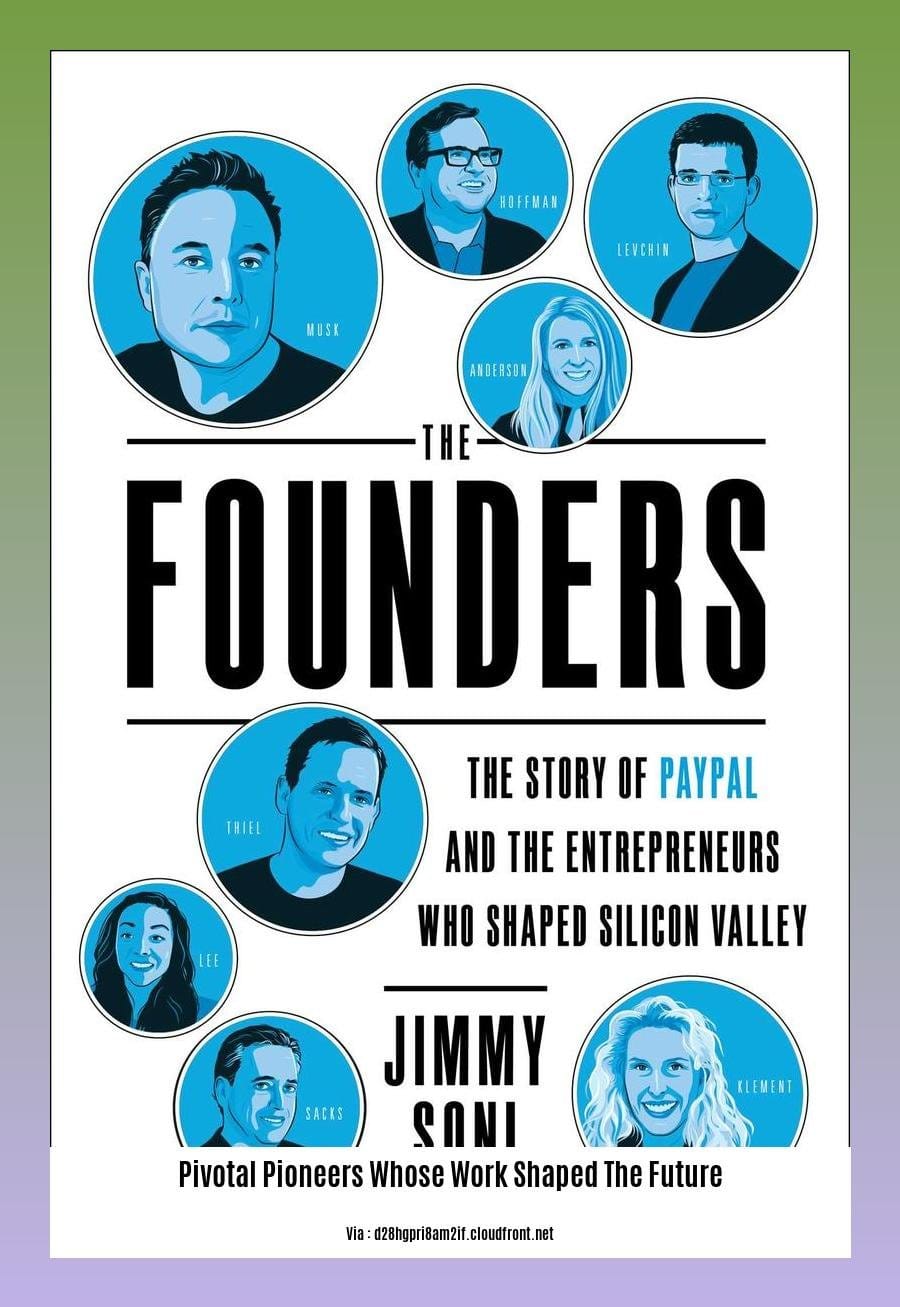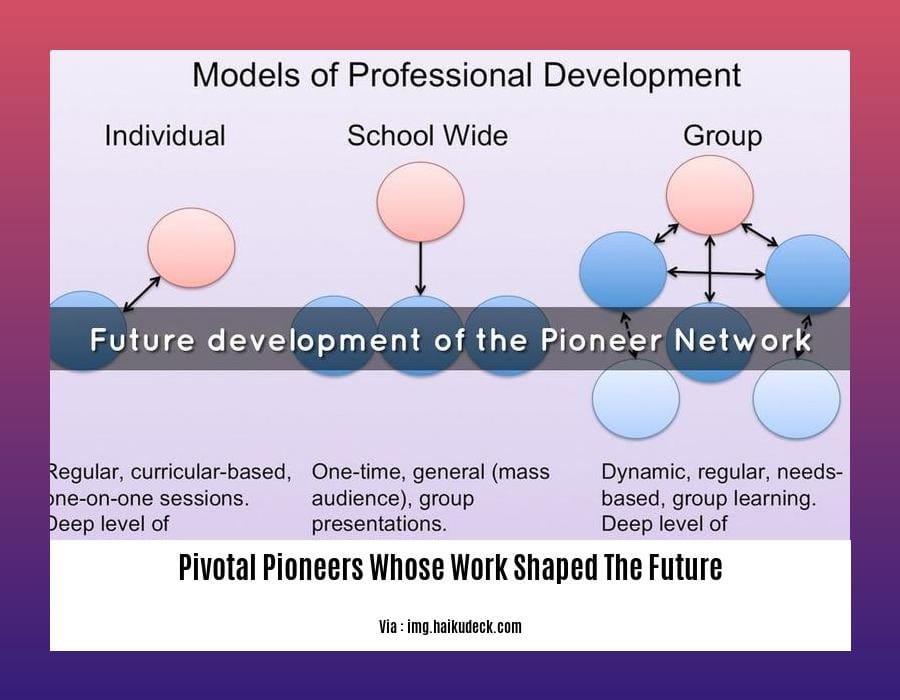Prepare to embark on an extraordinary journey through time as we delve into the lives of pivotal pioneers whose groundbreaking work has indelibly shaped the tapestry of our world. From the dawn of scientific exploration to the frontiers of modern technology, these visionaries have pushed the boundaries of human knowledge and forever altered the course of our destiny. Join us as we explore the transformative contributions of these brilliant minds, whose unwavering pursuit of discovery has left a lasting legacy on our planet and beyond.
Key Takeaways:

- 29 remarkable Black innovators and scientists have significantly advanced science, technology, engineering, and environmentalism.
- These individuals have profoundly shaped our modern world.
- Their contributions span diverse fields, including medicine, technology, engineering, and environmental conservation.
- Their pioneering work has positively impacted countless lives.
Pivotal Pioneers Whose Work Shaped the Future
Innumerable pivotal pioneers have blazed trails throughout history, leaving indelible marks on our world. These visionaries, with their unyielding spirits and relentless pursuit of knowledge, have reshaped the very fabric of human existence. From scientific breakthroughs to societal transformations, their contributions have shaped the future we live in today.
Alexander Graham Bell: The Voice of Communication
Alexander Graham Bell’s invention of the telephone in 1876 revolutionized communication. By harnessing the power of electricity, he bridged distances, enabling near-instantaneous voice transmissions. Bell’s innovation laid the foundation for modern telecommunications, connecting people across continents and fostering global interconnectedness.
Marie Curie: A Luminous Legacy in Science
Marie Curie’s groundbreaking work in radioactivity earned her a Nobel Prize in 1903. She not only discovered two new elements, polonium and radium, but also coined the term “radioactivity,” forever altering our understanding of the atomic world. Curie’s pioneering research paved the way for advancements in medicine, physics, and nuclear technology.
Albert Einstein: Unveiling the Secrets of Time and Space
Albert Einstein’s theory of relativity, proposed in 1905, shattered our conventional notions of time, space, and gravity. His brilliance extended far beyond physics, inspiring generations of scientists and philosophers to question the fundamental nature of our universe. Einstein’s legacy continues to influence our understanding of the cosmos and guide technological advancements.
Alan Turing: The Father of Artificial Intelligence
Alan Turing’s theoretical work laid the groundwork for modern computing and artificial intelligence. His Enigma machine, developed during World War II, played a crucial role in deciphering enemy communications. Turing’s contributions have shaped the digital age, from computer science to machine learning and beyond.
Rosalind Franklin: Illuminating the Structure of Life
Rosalind Franklin’s X-ray crystallography images of DNA provided crucial insights into its structure. Her pioneering work, though largely unrecognized during her lifetime, paved the way for James Watson and Francis Crick’s discovery of the double helix. Franklin’s contributions have revolutionized our understanding of genetics and the blueprint of life.
Martin Luther King, Jr.: A Beacon of Social Justice
Martin Luther King, Jr.’s unwavering commitment to nonviolent civil disobedience played a transformative role in the fight for racial equality. His leadership during the Civil Rights Movement in the United States inspired millions, challenging societal norms and paving the way for a more just and equitable society.
Bill Gates: Democratizing Technology
Bill Gates’ co-founding of Microsoft made personal computing accessible to the masses. His vision of a “computer on every desk and in every home” has shaped the digital landscape, empowering individuals and businesses alike. Gates’ legacy extends beyond technology, as he continues to advocate for global health and education initiatives.
These pivotal pioneers represent only a fraction of the countless visionaries who have shaped our world. Their contributions have pushed the boundaries of human knowledge, revolutionized communication, fostered societal progress, and laid the foundation for the future. Let us honor their legacy by embracing innovation, challenging the status quo, and striving to create a better tomorrow for generations to come.
Discover the innovators whose work continues to influence today and the pioneers whose breakthroughs endure generations later whose pioneering innovations remain relevant and are still used today.
Albert Einstein and the Theory of Relativity
In 1905, Albert Einstein unveiled his groundbreaking theory of relativity, a revolutionary concept that reshaped our understanding of space, time, and gravity. At its core, the theory postulates that gravity is not a force but rather a curvature of spacetime caused by the presence of mass and energy. This profound insight challenged the prevailing Newtonian physics and opened up new avenues for scientific exploration.
Einstein’s theory has had a profound impact on our understanding of the cosmos. It explains the bending of light around massive objects, the existence of black holes, and the formation of gravitational waves. These discoveries have led to advancements in technology, including the Global Positioning System (GPS) and nuclear energy.
Key Takeaways:
- Gravity is not a force but a curvature of spacetime.
- Massive objects bend spacetime, causing light to deflect and time to slow down.
- The theory of relativity provides a framework for understanding celestial phenomena such as black holes and gravitational waves.
- Einstein’s work has revolutionized our understanding of the universe and paved the way for technological advancements.
Most Relevant URL Source:
How Einstein’s Theory of Relativity Changed the World
Alan Turing and the Foundation of Modern Computing
Alan Turing, a brilliant mind ahead of his time, laid the groundwork for the digital world we inhabit today. His groundbreaking contributions to computer science, artificial intelligence, and cryptography have forever altered the course of human history.
Key Takeaways:
- Turing’s “Turing machine” (1936): A theoretical model for a general-purpose computer, paving the way for modern computing devices.
- Enigma Code Breaking (WWII): Turing’s pivotal role in deciphering Nazi communications, significantly contributing to Allied victory.
- Turing Test (1950): A method to assess machine intelligence, sparking ongoing discussions on artificial intelligence capabilities.
Turing’s Legacy Lives On:
Turing’s pioneering spirit and relentless pursuit of knowledge have left an indelible mark on our world. His theoretical concepts and practical applications continue to inspire and guide advancements in:
- Computer Architecture and Design
- Artificial Intelligence and Machine Learning
- Cryptography and Information Security
Turing’s contributions have not only transformed the technological landscape but also challenged our understanding of intelligence and the boundaries of human ingenuity.
Most Relevant URL Source:
- Alan Turing: The Father of Modern Computing – NIST
Rosalind Franklin and the Structure of DNA
Rosalind Franklin, an influential chemist and crystallographer, played a crucial role in deciphering the structure of DNA, the molecule that holds the instructions for life.
Her expertise in X-ray crystallography led to the capture of Photo 51, an image that provided critical insights into DNA’s structure. Franklin’s work independently established the relationship between DNA structure and protein specification.
Despite her significant contributions, Franklin’s role was initially overlooked in the award ceremony for the discovery. Her unpublished data, however, formed the basis for James Watson and Francis Crick’s breakthrough.
Key Takeaways:
- Rosalind Franklin’s X-ray diffraction images provided crucial evidence for understanding the structure of DNA.
- Her work paved the way for the discovery of the DNA double helix.
- Franklin’s role was initially overlooked due to gender bias.
Most Relevant URL Source:

FAQ
Q1: Who are some of the pivotal pioneers whose work has profoundly influenced our present and future?
A1: Among the notable Black innovators and scientists who have made significant contributions to science, technology, engineering, and environmental advocacy are:
* Lewis Latimer, inventor of the light bulb socket
* Percy Julian, chemist who synthesized cortisone, a life-saving drug for arthritis
* Mae Jemison, the first African American woman to travel to space
* Patricia Bath, inventor of a laser surgery device used in cataract treatment
* James West, inventor of the electret microphone
Q2: How did Albert Einstein’s theory of relativity revolutionize our understanding of the universe?
A2: Einstein’s general theory of relativity transformed our comprehension of gravity and spacetime. It elucidates that gravity is not a force but rather the curvature of spacetime induced by mass and energy. This theory laid the groundwork for understanding celestial phenomena like black holes and gravitational waves, and led to advancements in technologies such as GPS and nuclear energy.
Q3: What were Alan Turing’s groundbreaking contributions to computing and artificial intelligence?
A3: Alan Turing, regarded as the “father of modern computing,” pioneered theoretical computer science and cryptography. He conceptualized the “Turing machine,” a theoretical model for general-purpose computers, and played a pivotal role in breaking the German Enigma code during World War II. Turing’s legacy extends to the development of “Turing tests” to evaluate machine intelligence and his exploration of artificial intelligence and machine learning.
Q4: How did Rosalind Franklin’s work contribute to the discovery of the DNA double helix?
A4: Rosalind Franklin’s X-ray crystallography techniques captured Photo 51, a crucial image that provided essential data for deciphering the structure of DNA. Her independent insights into the relationship between DNA structure and protein specification laid the groundwork for the discovery of the DNA double helix, revolutionizing our understanding of genetics.
Q5: What are some ways in which these pivotal pioneers continue to inspire and inform scientific advancements today?
A5: The pioneering work of these innovators and scientists continues to serve as a beacon of inspiration for contemporary research and development. Their contributions have set the stage for advancements in various fields, including medicine, engineering, technology, and environmental conservation. Their legacy motivates scientists and researchers to push the boundaries of knowledge, seek innovative solutions, and strive for a better future for all.
- Unveiling Bernhard Caesar Einstein’s Scientific Achievements: A Legacy in Engineering - July 15, 2025
- Uncover who is Jerry McSorley: CEO, Family Man, Business Success Story - July 15, 2025
- Discover Bernhard Caesar Einstein’s Scientific Contributions: Unveiling a Legacy Beyond Einstein - July 15, 2025















